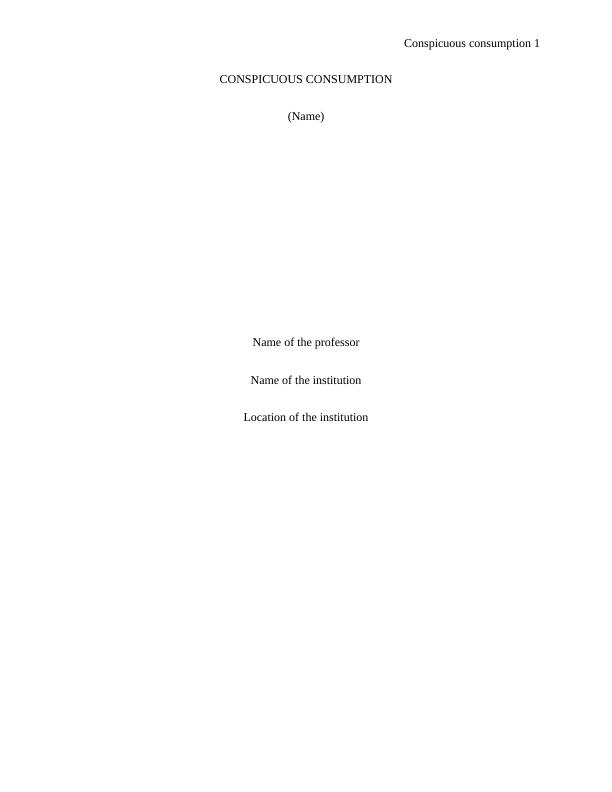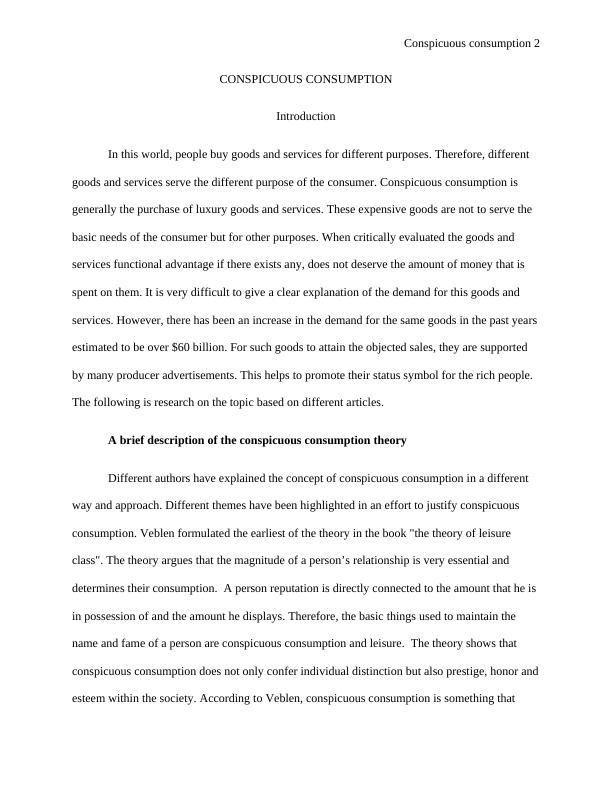Conspicuous Consumption: Theory, Themes, and Future Research
This unit guide provides important information and resources for the Business Research Methods course at the College of Business.
6 Pages1353 Words228 Views
Added on 2023-06-07
About This Document
This article explores the concept of conspicuous consumption, its theories, themes, and future research. It discusses how the consumption of luxury goods and services affects social status and contributes to underdevelopment. The article proposes future research on the relationship between conspicuous consumption and crime, trends in non-industrialized countries, and gender differences in consumption behavior.
Conspicuous Consumption: Theory, Themes, and Future Research
This unit guide provides important information and resources for the Business Research Methods course at the College of Business.
Added on 2023-06-07
ShareRelated Documents
End of preview
Want to access all the pages? Upload your documents or become a member.
Conspicuous Consumption: A Review of Literature
|7
|1701
|139
Sociology Assignment: Sociology of Consumption
|9
|2192
|339
Conspicuous Consumption of Luxury Goods: A Research Review
|8
|1617
|69
Business Research Methods : Assignment
|9
|2193
|61
Conspicuous Consumption and its Impact on Consumer Behavior
|7
|1724
|312
Conspicuous Consumption: Displaying Wealth and Social Status
|7
|1533
|292



